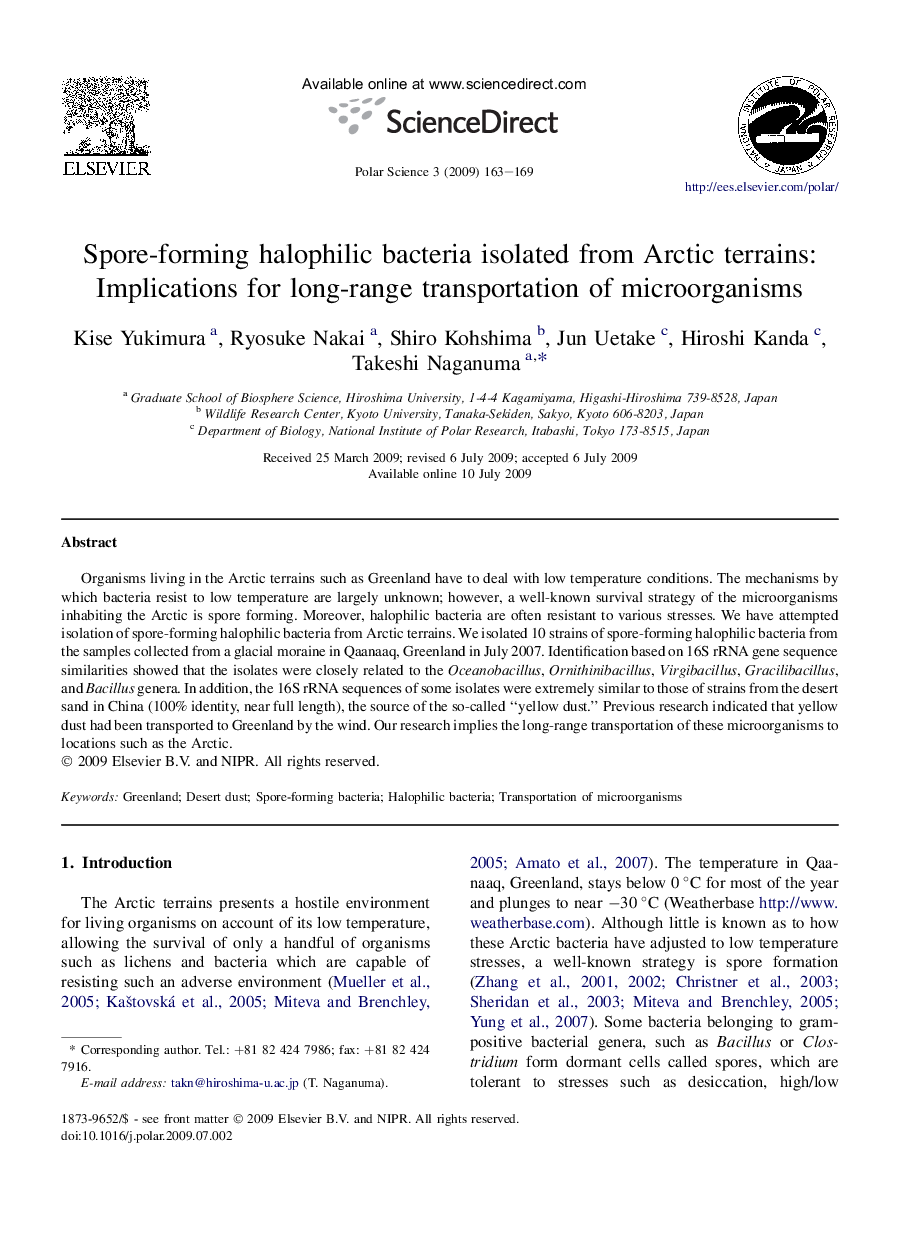| Article ID | Journal | Published Year | Pages | File Type |
|---|---|---|---|---|
| 4683429 | Polar Science | 2009 | 7 Pages |
Organisms living in the Arctic terrains such as Greenland have to deal with low temperature conditions. The mechanisms by which bacteria resist to low temperature are largely unknown; however, a well-known survival strategy of the microorganisms inhabiting the Arctic is spore forming. Moreover, halophilic bacteria are often resistant to various stresses. We have attempted isolation of spore-forming halophilic bacteria from Arctic terrains. We isolated 10 strains of spore-forming halophilic bacteria from the samples collected from a glacial moraine in Qaanaaq, Greenland in July 2007. Identification based on 16S rRNA gene sequence similarities showed that the isolates were closely related to the Oceanobacillus, Ornithinibacillus, Virgibacillus, Gracilibacillus, and Bacillus genera. In addition, the 16S rRNA sequences of some isolates were extremely similar to those of strains from the desert sand in China (100% identity, near full length), the source of the so-called “yellow dust.” Previous research indicated that yellow dust had been transported to Greenland by the wind. Our research implies the long-range transportation of these microorganisms to locations such as the Arctic.
